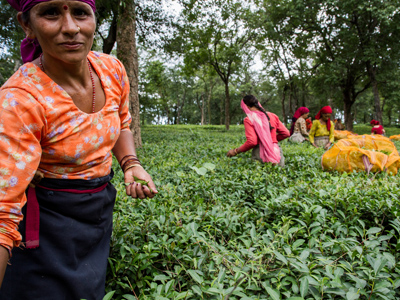Over the twenty years from 1990 to 2010, the efforts of countries working to achieve the United Nation's Millennium Development Goals (MDGs) have moved 700 million people out of extreme poverty. More than 2 billion people gained access to improved drinking water, a basic necessity of life. Roughly 21 million lives have been saved by tackling malaria and tuberculosis, while the world has made significant strides in reducing hunger. All this progress came from the concerted efforts of the UN, national governments, NGOs, and private citizens and foundations.
Yet many Christians, perhaps out of a traditional American distrust of the UN and intergovernmental agencies, have seemed detached from this effort.
Christians are motivated by the command of Scripture and Jesus Christ's example to care for the poor. They show a great deal of passion and commitment to helping to lift people out of extreme poverty. They give more money to this cause than those who don't go to church. They support several poverty fighting organizations with budgets in the hundreds of millions of dollars. People like Brian Fikkert, an economist, author, and in-demand speaker on poverty, and David Platt, a pastor and best-selling author who moved to a high-crime, low income neighborhood in Birmingham, are near celebrities in Christian circles.
Despite Christians' tireless efforts, however, many neglect the role of the MDGs in ending extreme poverty, and now is the time for this to change.
Over the next two years, governments and institutions around the world will be discussing and debating an agenda for the years following 2015, the expiration date for the current MDGs. While we can celebrate that many of the goals will be met--and some already have been--progress has been uneven across the world and some of the more difficult goals remain. Despite the fact that the world possesses the knowledge, science, and resources, extreme poverty continues to cause tremendous suffering. That's why now is such an important time for Christians to engage this process. The toughest work is still ahead of us.
Christians can bring to the table a unique perspective on poverty that can help to solve its insidious nature. Poverty is often a matter of broken relationships as much as it is about lacking material things. A community's values and behavior can cause or perpetuate poverty, preventing girls from attending school, for example, or turning a blind eye to abuse, violence, or injustice. However, faith and religion are powerful tools that can shape values and change behavior. While these tools can be used badly, often the support of religious communities can be a critical ingredient to the success of antipoverty efforts.
Christians in the US can also help the UN achieve its goals around the world. Roughly 2 million Christians spend $1.5 billion annually to work on projects on behalf of the poor, many of them overseas. I would imagine that these Christians spend more time face to face with those affected by poverty than many UN policy makers. When these Christians engage at the highest policy levels as well as through grassroots efforts, they can become powerful agents of change. And when Christian leaders--in the US and overseas--back this work with their moral authority and leadership, the Christian church around the world could truly help transform the lives of billions of people.
It is time for Christians who care about poverty to recognize and support one of the most important poverty-fighting efforts in the world, while offering the unique contributions of the faith community. There are two ways any Christian can contribute. First, they can add their voice to the post-2015 process by visiting worldwewant2015.org and submitting their own thoughts on the kind of world they would like to live in.
Second, they can pray. This week during the United Nations General Assembly, I gathered with a number of religious leaders in New York City to pray for an end to extreme poverty around the world. As the crisis in Syria rages with millions of refugees, half of them children, we believe that prayer is an essential tool to help end the conflict now and promote peace and development around the world.
Christians have always acted on behalf of the poor. It is time we also engage with all those of good will who seek the same thing.
Rich Stearns is president of World Vision US and author of Unfinished: Believing Is Only the Beginning.


